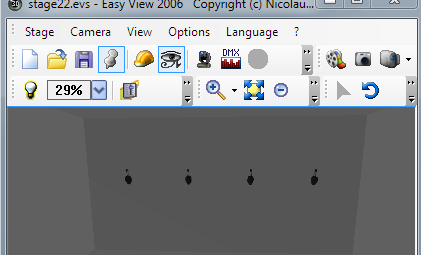

“He was a true talent which I really admired.”ġ1. Woo learned while filming the warehouse scene that Barry Wong, the film’s writer, had died.

Hard-Boiled has three major action sequences, so filming in sequence lets Woo know that the warehouse scene has to improve upon the opening teahouse scene - and that the end hospital shootout needs to top both.ġ0. Woo prefers filming his movies in sequence, not just for momentum but also so he knows to make what comes next better. Woo says Anthony Wong is a big fan of Al Pacino and Robert De Niro and would often try to imitate them in his acting.
#Freestyler make sequence from cue free
I’m free and open.” He adds that he also has no love for film theory or proper film language and instead simply uses what he wants.Ĩ. “Logic is very boring,” says Woo in regard to how he crafts his characters and scenes. Woo wasn’t in the shooting script, but Woo added it on short notice and played the character himself. The page lists production problems as follows: “No blatant problems or delays per se, but half the grips and gaffers chose to be listed in the final credits as Alan Smithee.” This doesn’t make any sense as the film was never made, so yes, this Hollywood’s Coming site is an intentional joke… which means we don’t actually have details on Hatchet Man.Ħ. What?! A quick Google search brings up little aside from this description filled with bullshit details including an attached cast with names like Keanu Reeves, Sandra Bullock, and Meg Ryan. Avary introduces himself as a twenty-eight-year-old who directed Killing Zoe (1993), co-wrote Pulp Fiction (1994), and is in the middle of writing a script for Woo titled Hatchet Man.

They kept the teahouse scene, obviously, but changed up the motivation and plot details that followed including shifting Leung’s character into an undercover cop named Alan.ĥ. Woo’s big concern was it being a “bad influence” and inspiring copycat baby killers. It was only after filming that shootout that Woo and Chang decided to change that entire plotline. The cast was signed featuring Tony Leung as the baby-killing psycho, and they filmed the first scene at the tea house - it was scheduled for demolition so they only had five days to make use of it. The script initially focused on a villain who was poisoning formula bottles and killing babies. “But in the meantime, he’s a drummer,” so Woo shifted that into a cop who plays music in a jazz club.Ĥ. Woo interviewed real cops while researching the film including one detective who was known for being extremely tough towards the bad guys.

Sam Peckinpah’s The Wild Bunch is an inspiration in various ways including the beat where William Holden’s character drinks an entire bottle of tequila - hence the lead character here named Tequila ( Chow Yun-fat).ģ. “It would make you feel cool and feel like a man.”Ģ. Woo recalls drinking tequila in Hong Kong by adding soda, covering it with a napkin, and then slamming the glass down to stir up some bubbles. Keep reading to see what I heard on the commentary track for Hard-Boiled! Hard-Boiled (1992)Ĭommentators: John Woo (director), Terence Chang (producer), David Kehr (critic), Roger Avary (filmmaker)ġ. This time, though, I did so with the commentary track from Criterion’s long out-of-print DVD release. One of his best remains 1992’s Hard-Boiled, and it’s such an endlessly rewatchable modern classic that I decided to give it yet another spin. From The Killer (1989) to Face/Off (1997) - with other gems landing before, in between, and after - Woo is well-established as a top-tier action filmmaker. When you think about the best action movies of all time, the odds are that one or two of the titles swirling around in your brain as contenders were directed by John Woo. In this edition, Rob Hunter rewatches the John Woo masterpiece Hard-Boiled with commentary from the man himself. Welcome to Commentary Commentary, where we sit and listen to filmmakers talk about their work, then share the most interesting parts.


 0 kommentar(er)
0 kommentar(er)
